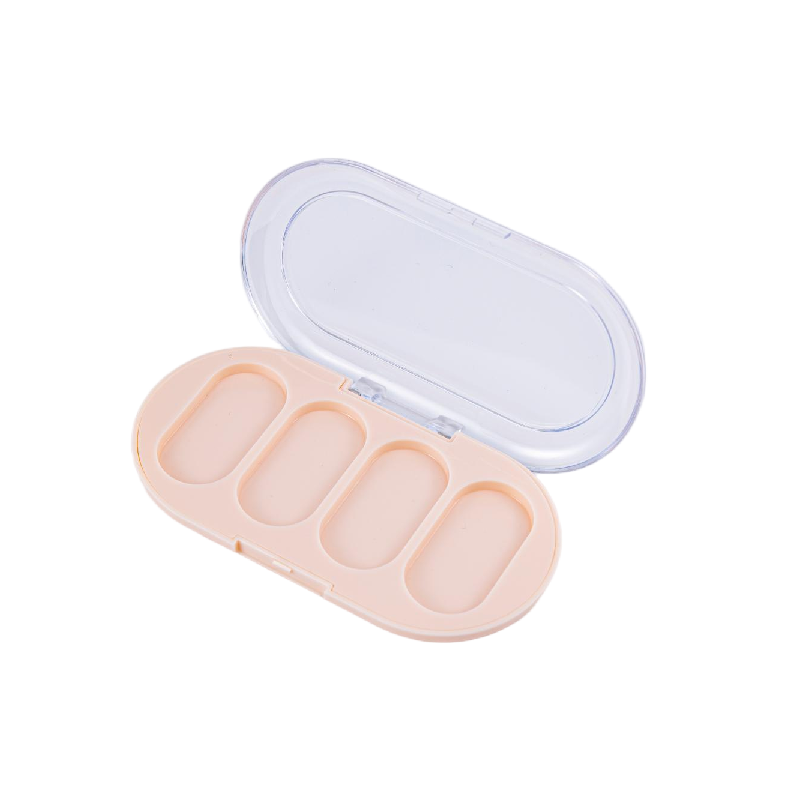
Empty makeup pans are essential components for cosmetics packaging, offering a convenient and customizable way to store makeup products like eyeshadows, blushes, and powders. These pans not only need to be functional but also durable, lightweight, and safe for use with various cosmetics. The materials used in making empty makeup pans play a key role in these qualities.
1. Aluminum
Aluminum is one of the popular materials used in the manufacturing of empty makeup pans. It is lightweight, durable, and resistant to corrosion, making it ideal for holding cosmetics. Aluminum pans are often used because they are easy to shape and mold into different sizes and designs. The material is also non-reactive, which ensures that the makeup stays intact without any contamination. Additionally, aluminum is highly recyclable, making it an environmentally friendly option for those looking to reduce their carbon footprint.
Aluminum pans are often coated with a thin layer of anodized material to increase their resistance to scratching and fading, ensuring that the pan maintains its appearance even with frequent use.
2. Stainless Steel
Stainless steel is another common material for empty makeup pans. While it is heavier than aluminum, stainless steel offers greater strength and durability, making it a reliable option for long-lasting pans. Stainless steel is also highly resistant to rust and corrosion, making it safe to use with various cosmetic products. Unlike aluminum, stainless steel does not require an additional coating for protection, as it naturally resists tarnishing and degradation.
Many high-end or professional makeup pans are made from stainless steel because of its robust nature and aesthetic appeal. Stainless steel pans can also be easily sterilized, ensuring that they remain hygienic even after multiple uses.
3. Plastic
Plastic is a more affordable option for empty makeup pans and is commonly used in mass-market cosmetic products. While plastic pans are generally lighter than metal ones, they are still durable enough to hold powder-based makeup products. Plastic pans can be made in a variety of colors and finishes, which makes them highly customizable. They are also often used in combination with other materials, like metal, to create hybrid designs that provide both durability and cost-effectiveness.
However, plastic pans are less resistant to damage compared to metal ones, and they may degrade over time if exposed to sunlight or certain chemicals. To address this, manufacturers often use high-quality, BPA-free plastics that are safe for use in cosmetics packaging.
4. Tin
Tin is sometimes used for creating smaller, compact empty makeup pans, especially for products like lip balms or cream blushes. Tin pans offer a lightweight and inexpensive option, with a smooth finish that enhances the look of the makeup. The material is also malleable, making it easy to create custom shapes and sizes. Like aluminum, tin is corrosion-resistant, which ensures that it remains durable and safe for use over time.
5. Glass
While less common, glass is occasionally used for empty makeup pans, particularly in high-end or luxury makeup packaging. Glass pans offer a sleek, elegant appearance and can be molded into various shapes. However, glass is heavier and more fragile than other materials, so it's often used for specialized products or limited-edition releases.
The material chosen for empty makeup pans greatly impacts the product's durability, cost, and appearance. Aluminum, stainless steel, plastic, tin, and glass each offer unique benefits depending on the makeup product and the brand's goals. While aluminum and stainless steel are preferred for their strength and longevity, plastic provides an affordable alternative. Understanding the materials used in makeup pans helps consumers make informed decisions and allows manufacturers to design products that meet both aesthetic and functional needs.



 English
English  中文简体
中文简体  عربى
عربى  Español
Español 


